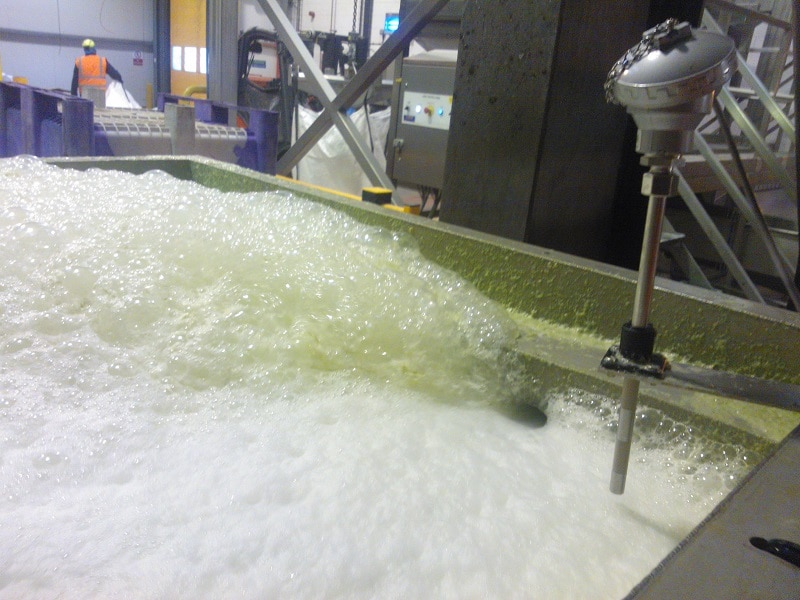Comprehending the Value of Foam Control in Industrial Processes
In commercial procedures, foam control is often a neglected yet important aspect that directly influences functional performance and item honesty. The existence of extreme foam can lead to considerable difficulties, consisting of interrupted mixing and decreased reaction kinetics, which might inevitably influence item high quality across different markets such as pharmaceuticals and food production. Recognizing the subtleties of foam administration, including prospective improvements and reliable techniques, raises critical inquiries regarding best practices and future technologies. What are the ramifications for industries pursuing improved efficiency and compliance?

The Role of Foam in Sector
Foam plays a substantial role in numerous commercial processes, affecting both effectiveness and product top quality. In industries such as food and drink, pharmaceuticals, and petrochemicals, foam can serve both detrimental and valuable functions. In the food market, foam stablizing is important throughout processes like whipping lotion or producing beer, where the high quality of foam straight impacts customer assumption and product attributes.
In chemical manufacturing, foam can work as an obstacle, avoiding the proper blending of reagents, which can bring about insufficient reactions and suboptimal yields. Alternatively, in processes like flotation in mineral handling, foam is made use of to separate important minerals from waste product, improving recuperation rates.
Furthermore, in wastewater treatment, foam development can indicate the existence of raw material, acting as a vital specification for process tracking. The capacity to regulate foam is important for preserving process stability and enhancing operational expenses. Recognizing the duty of foam in commercial applications permits designers and drivers to implement effective foam monitoring methods, making certain that foam adds positively to total process efficiency while decreasing its possible drawbacks.
Typical Difficulties of Foam Development
Lots of markets deal with considerable difficulties because of the unintentional formation of foam during various procedures. Foam can interrupt the performance of operations, resulting in enhanced downtime and higher functional prices. In markets such as pharmaceuticals, food and beverage, and wastewater therapy, foam can prevent blending, lower product yield, and make complex splitting up processes.
Moreover, foam can develop safety and security dangers by obstructing clear visibility, which is essential in settings where exact measurements and tracking are required. The presence of foam can additionally cause equipment damages, as extreme pressure build-up may take place in containers and reactors.
In addition, the requirement for constant intervention to manage foam can draw away resources and labor, inevitably affecting performance. Environmental laws present another obstacle, as excessive foam can cause non-compliance concerns in effluent discharge, requiring additional therapy procedures.
Effect On Product Quality

In chemical production, foam can hinder response kinetics by restricting gas-liquid get in touch with, leading to insufficient responses and lower yields. This not just influences the efficiency of manufacturing yet can also lead to low quality end the original source items that do not fulfill regulatory requirements or client requirements.
Furthermore, in drugs, foam formation during formulation processes can present air bubbles into delicate substances, compromising medication efficiency and security. In addition, foam can cause functional concerns such as overflow and tools malfunctions, increasing downtime and maintenance expenses, additionally influencing item top quality and consistency.
Strategies for Effective Foam Control
Attending to the difficulties posed by foam is important for preserving product high quality across different industrial markets. Efficient foam control methods are important to mitigate the damaging impacts of foam development, which can interfere with procedures and concession item honesty.
One of the key strategies involves the option and application of ideal antifoaming representatives. These agents are designed to minimize surface stress and prevent bubble development, and their effectiveness can vary based on the specific process problems. Routine tracking of foam levels is important to make sure timely intervention, permitting operators to use antifoaming representatives before foam comes to be a significant problem.
Furthermore, enhancing procedure specifications such as temperature level and agitation can play a critical role in foam administration. Decreasing frustration intensity or readjusting feed prices can reduce foam generation. Carrying out mechanical foam control devices, such as foam breakers or defoamers, can likewise give reliable remedies for high-foaming applications.
Educating workers on foam management methods and the importance of keeping ideal operating conditions even more enhances foam control initiatives. Foam Control. By utilizing a mix of these approaches, sectors can properly manage foam, guaranteeing functional efficiency and keeping the quality of their items
Future Trends in Foam Management
Just how will advancements in technology form the future of foam management in commercial processes? The integration of expert system (AI) and artificial intelligence will revolutionize foam control techniques, allowing real-time surveillance and adaptive actions to foam formation. These modern technologies can analyze operational parameters and historical data to predict foam actions, allowing for preemptive steps that improve process effectiveness.
Furthermore, the advancement of innovative foam control agents, including bio-based and environmentally friendly alternatives, is getting traction. These advancements not only alleviate foam yet also straighten with sustainability goals, decreasing the environmental footprint of industrial operations.
Automation will likewise play a critical function, as automated foam control systems can optimize the dosage of defoamers based upon real-time measurements, minimizing waste and enhancing efficiency.
Furthermore, the adoption of IoT (Internet of Things) tools will certainly assist in seamless communication in between devices and foam control systems, guaranteeing a holistic strategy to foam management. (Foam Control)
Conclusion
In conclusion, reliable foam control is important for enhancing commercial procedures throughout numerous sectors. Implementing tactical foam management methods, including the use of antifoaming agents and procedure optimization, alleviates these challenges.
In the food industry, foam stabilization is essential throughout processes like whipping cream or generating beer, where the quality of foam straight impacts go to this web-site consumer understanding and product features.
Recognizing the function of foam in commercial applications allows designers and drivers to carry out effective foam monitoring strategies, get redirected here guaranteeing that foam contributes favorably to general procedure efficiency while lessening its possible disadvantages.
Normal tracking of foam levels is critical to make certain prompt intervention, allowing operators to apply antifoaming agents prior to foam comes to be a substantial concern.
Carrying out mechanical foam control devices, such as foam breakers or defoamers, can also offer reliable remedies for high-foaming applications.
The integration of fabricated intelligence (AI) and device discovering will certainly change foam control approaches, allowing real-time surveillance and flexible responses to foam development.